Spatial Data: Maps
Outline
- Discuss tidy data
- Review Good Reads (Refining to persuade)
- Highlight visualizing data with maps
- Work on projects
Tidy data
In tidy data:
- Each variable forms a column.
- Each observation forms a row.
- Each type of observational unit forms a table.
Five most common problems
- Column headers are values, not variable names.
- Multiple variables are stored in one column.
- Variables are stored in both rows and columns.
- Multiple types of observational units are stored in the same table.
- A single observational unit is stored in multiple tables.
Tidy data ensures that values of different variables from the same observation are always paired.

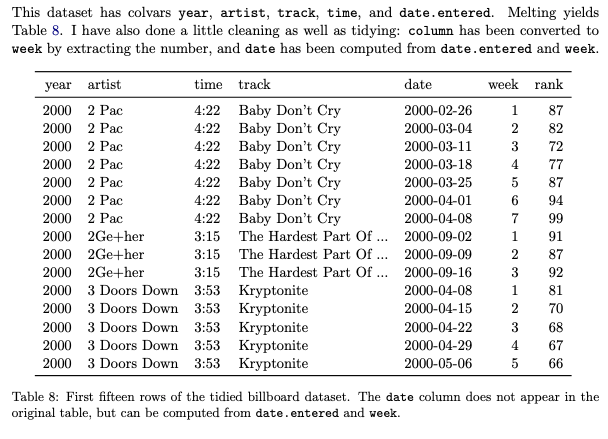
Good Reads
Chapter 6: Refine to Persuade (pgs. 133-142)
- You are trying to reveal truths dormant in the data; to make a case; compete for attention.
- It is often the [data scientists] job to show all the data - to be as objective as possible.
- Data presentation
- Data analysis
- Persuasion with data
- We decided that architecture, analytics, and visualization are all equal players.
Chapter 6: Line Charts vs. Bar Charts
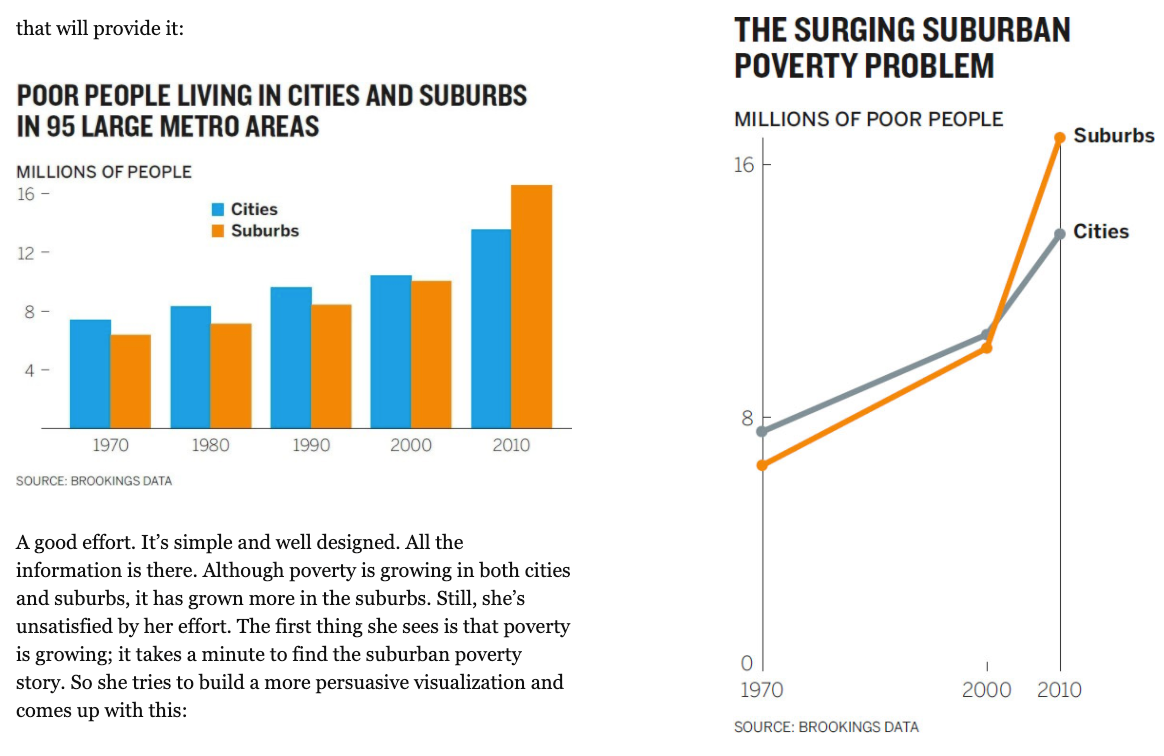
Chapter 6: Creating the thinking unit
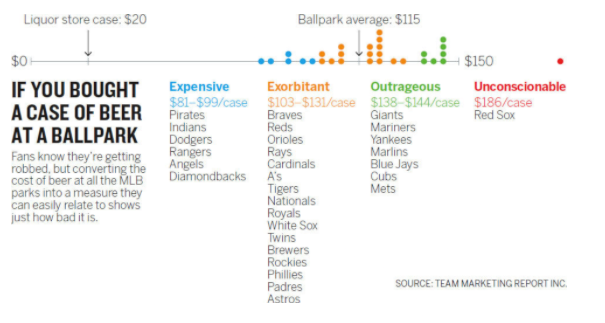
Visualizating variables on maps
Using geographic region chloropleths
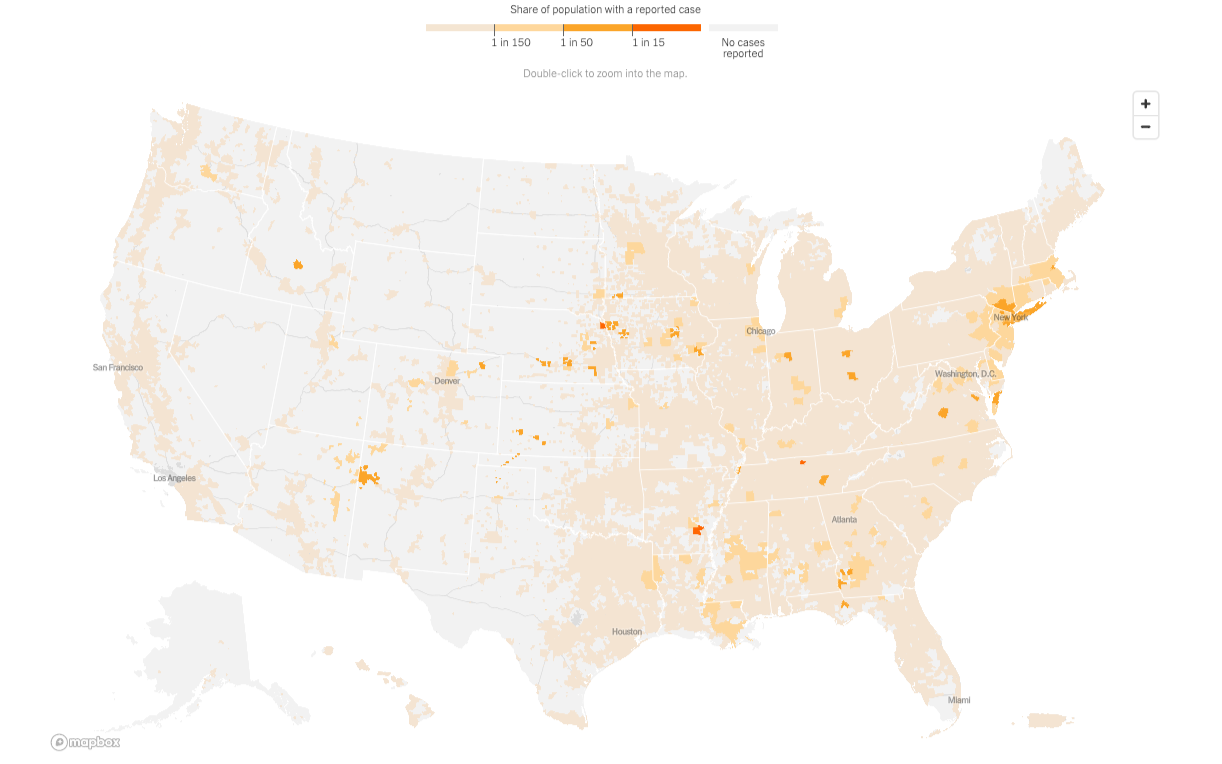
Using dots
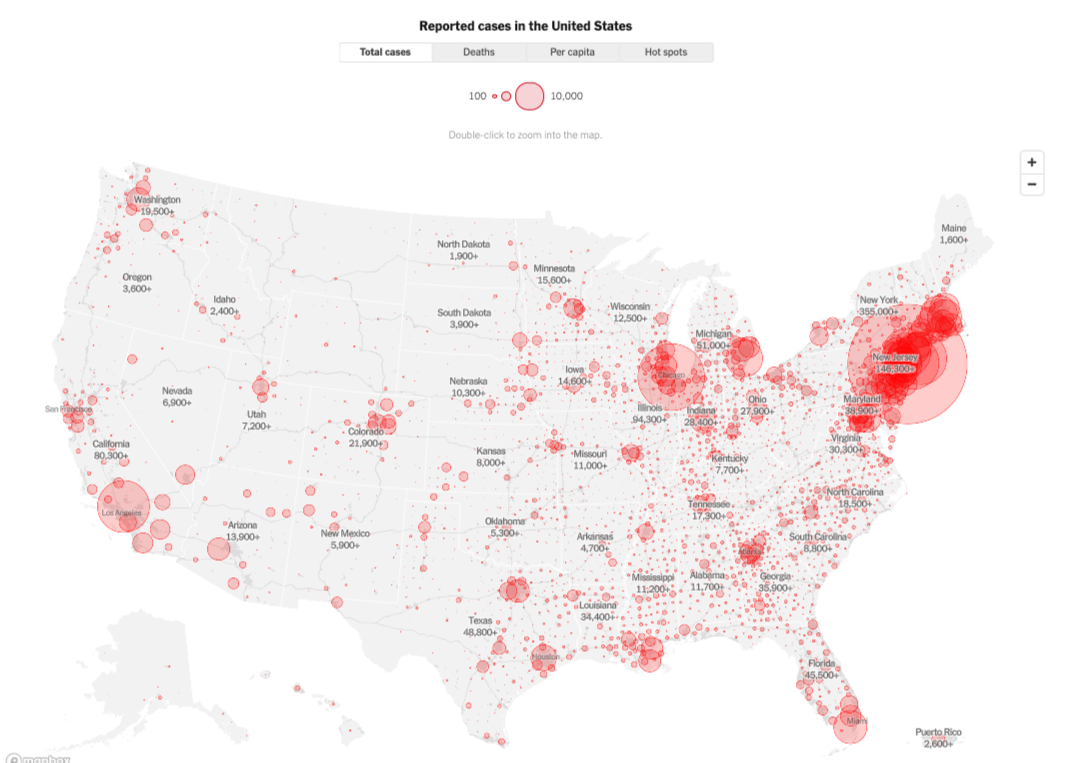
Making maps in Tableau
- Get Started Mapping with Tableau
- Multiple data sets in one Tableau file
- Joining data sets in a Tableau file
Case Study
Data interrogation time
Can you find an interesting spatial relationship (lat, long, state, elevation) to race times?